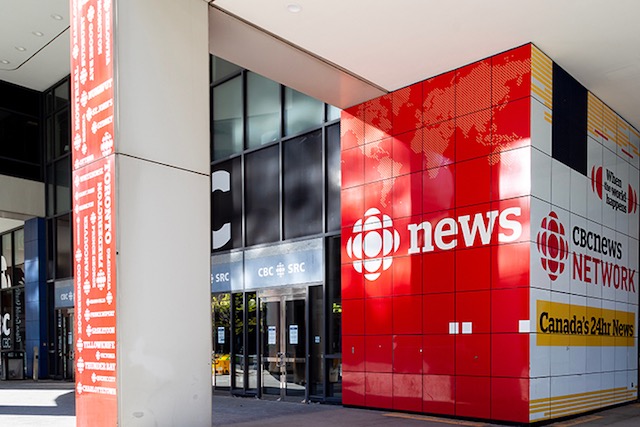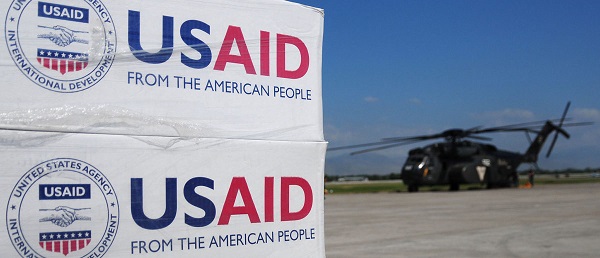National
Four years, $10,000, one frog: Inside Parks Canada’s costly frog cull

From the Canadian Taxpayers Federation
Author: Ryan Thorpe
It took Parks Canada four years and $10,000 to capture a bullfrog in British Columbia.
“Kids spend zero dollars actually catching frogs, but Parks Canada managed to spend several years and thousands of tax dollars not capturing a single frog,” said Franco Terrazzano, Federal Director of the Canadian Taxpayers Federation. “Did Parks Canada put Mr. Magoo in charge of this particular operation?”
Between 2018-19 and 2022-23, Parks Canada launched a series of unsuccessful culls of the American Bullfrog at the Gulf Islands National Park Reserve, according to access-to-information records obtained by the CTF.
The Gulf Islands National Park Reserve is a collection of 15 islands and 30 islets off the southern coast of B.C.
In 2018-19, Parks Canada spent $1,920 attempting to cull the American Bullfrog from these lands, but did not manage to kill a single frog.
The following year, Parks Canada spent $2,000 and again struck out.
The cull took a temporary hiatus in 2020-21, according to the records.
In 2021-22, Parks Canada spent another $2,207 on the cull, but once again failed to kill any bullfrogs.
Finally, in 2022-23, after years of failure, Parks Canada spent $3,882 and managed to kill one frog.
Between the years of 2018-19 and 2022-23, Parks Canada spent $10,009 on these frog hunts, capturing a single American Bullfrog in the process.
“The frogs appear to be slipping through the fingers of Parks Canada bureaucrats just as fast as our tax dollars are,” Terrazzano said. “Parks Canada keeps proving it’s very bad at hunting, but very good at wasting money.”
The American Bullfrog is the largest species of frog in North America, and is native to southern Ontario, Quebec, New Brunswick and Nova Scotia. It was “introduced” to B.C., according to the Canadian Encyclopaedia.
A Parks Canada brochure for the Gulf Islands National Park Reserve describes American Bullfrogs as “real bullies” that “prey on any animal they can overpower and stuff down their throat.”
In 2023-24, Parks Canada’s annual bullfrog hunt at the Gulf Islands National Park Reserve finally hit the jackpot, killing 100 bull frogs at a price tag of $5,079.
The frogs killed by Parks Canada so far have come at a hit to taxpayers of $149 a head.
The records obtained by the CTF detail all Parks Canada animal culls conducted between the years of 2018-19 and 2023-24, as well as any planned future spending.
During that time period, Parks Canada spent a combined $2.6 million on animal hunts targeting moose, deer, doves, foxes, frogs and rats, alongside different species of fish.
Parks Canada plans to spend an additional $3.3 million on animal culls in the coming years. The overall animal cull bill that Parks Canada plans to send to taxpayers sits at $5.9 million.
The highest profile of these animal culls is taking place on Sidney Island in B.C., with Parks Canada spending more than $800,000 on phase one of the hunting operation, which took down 84 deer, at a cost of $10,000 a head.
Residents of Sidney Island organized their own hunt last fall, killing 54 deer at no cost to taxpayers.
So far, Parks Canada has employed exotically expensive hunting techniques on Sidney Island, bringing in expert marksmen from the U.S. and New Zealand and renting a helicopter for $67,000.
Phase two of the operation is set for this fall and will involve ground hunting with dogs.
That deer hunt is part of a $12-million Parks Canada project, officially called the Fur To Forest program, aimed at eradicating the European fallow deer population on Sidney Island and restoring native vegetation, tree seedlings and shrubs.
“The Sidney Island deer hunt has already proven to be an utter disaster and Parks Canada should cut taxpayers’ losses and cancel phase two,” Terrazzano said. “Parks Canada should stop cosplaying as Rambo on the hunt for deer and frogs before it wastes even more of our money.”
Business
Most Canadians say retaliatory tariffs on American goods contribute to raising the price of essential goods at home

- 77 per cent say Canada’s tariffs on U.S. products increase the price of consumer goods
- 72 per cent say that their current tax bill hurts their standard of living
A new MEI-Ipsos poll published this morning reveals a clear disconnect between Ottawa’s high-tax, high-spending approach and Canadians’ level of satisfaction.
“Canadians are not on board with Ottawa’s fiscal path,” says Samantha Dagres, communications manager at the MEI. “From housing to trade policy, Canadians feel they’re being squeezed by a government that is increasingly an impediment to their standard of living.”
More than half of Canadians (54 per cent) say Ottawa is spending too much, while only six per cent think it is spending too little.
A majority (54 per cent) also do not believe federal dollars are being effectively allocated to address Canada’s most important issues, and a similar proportion (55 per cent) are dissatisfied with the transparency and accountability in the government’s spending practices.
As for their own tax bills, Canadians are equally skeptical. Two-thirds (67 per cent) say they pay too much income tax, and about half say they do not receive good value in return.
Provincial governments fared even worse. A majority of Canadians say they receive poor value for the taxes they pay provincially. In Quebec, nearly two-thirds (64 per cent) of respondents say they are not getting their money’s worth from the provincial government.
Not coincidentally, Quebecers face the highest marginal tax rates in North America.
On the question of Canada’s response to the U.S. trade dispute, nearly eight in 10 Canadians (77 per cent) agree that Ottawa’s retaliatory tariffs on American products are driving up the cost of everyday goods.
“Canadians understand that tariffs are just another form of taxation, and that they are the ones footing the bill for any political posturing,” adds Ms. Dagres. “Ottawa should favour unilateral tariff reduction and increased trade with other nations, as opposed to retaliatory tariffs that heap more costs onto Canadian consumers and businesses.”
On the issue of housing, 74 per cent of respondents believe that taxes on new construction contribute directly to unaffordability.
All of this dissatisfaction culminates in 72 per cent of Canadians saying their overall tax burden is reducing their standard of living.
“Taxpayers are not just ATMs for government – and if they are going to pay such exorbitant taxes, you’d think the least they could expect is good service in return,” says Ms. Dagres. “Canadians are increasingly distrustful of a government that believes every problem can be solved with higher taxes.”
A sample of 1,020 Canadians 18 years of age and older was polled between June 17 and 23, 2025. The results are accurate to within ± 3.8 percentage points, 19 times out of 20.
The results of the MEI-Ipsos poll are available here.
* * *
The MEI is an independent public policy think tank with offices in Montreal, Ottawa, and Calgary. Through its publications, media appearances, and advisory services to policymakers, the MEI stimulates public policy debate and reforms based on sound economics and entrepreneurship.
Business
B.C. premier wants a private pipeline—here’s how you make that happen

From the Fraser Institute
By Julio Mejía and Elmira Aliakbari
At the federal level, the Carney government should scrap several Trudeau-era policies including Bill C-69 (which introduced vague criteria into energy project assessments including the effects on the “intersection of sex and gender with other identity factors”)
The Eby government has left the door (slightly) open to Alberta’s proposed pipeline to the British Columbia’s northern coast. Premier David Eby said he isn’t opposed to a new pipeline that would expand access to Asian markets—but he does not want government to pay for it. That’s a fair condition. But to attract private investment for pipelines and other projects, both the Eby government and the Carney government must reform the regulatory environment.
First, some background.
Trump’s tariffs against Canadian products underscore the risks of heavily relying on the United States as the primary destination for our oil and gas—Canada’s main exports. In 2024, nearly 96 per cent of oil exports and virtually all natural gas exports went to our southern neighbour. Clearly, Canada must diversify our energy export markets. Expanded pipelines to transport oil and gas, mostly produced in the Prairies, to coastal terminals would allow Canada’s energy sector to find new customers in Asia and Europe and become less reliant on the U.S. In fact, following the completion of the Trans Mountain Pipeline expansion between Alberta and B.C. in May 2024, exports to non-U.S. destinations increased by almost 60 per cent.
However, Canada’s uncompetitive regulatory environment continues to create uncertainty and deter investment in the energy sector. According to a 2023 survey of oil and gas investors, 68 per cent of respondents said uncertainty over environmental regulations deters investment in Canada compared to only 41 per cent of respondents for the U.S. And 59 per cent said the cost of regulatory compliance deters investment compared to 42 per cent in the U.S.
When looking at B.C. specifically, investor perceptions are even worse. Nearly 93 per cent of respondents for the province said uncertainty over environmental regulations deters investment while 92 per cent of respondents said uncertainty over protected lands deters investment. Among all Canadian jurisdictions included in the survey, investors said B.C. has the greatest barriers to investment.
How can policymakers help make B.C. more attractive to investment?
At the federal level, the Carney government should scrap several Trudeau-era policies including Bill C-69 (which introduced vague criteria into energy project assessments including the effects on the “intersection of sex and gender with other identity factors”), Bill C-48 (which effectively banned large oil tankers off B.C.’s northern coast, limiting access to Asian markets), and the proposed cap on greenhouse gas (GHG) emissions in the oil and gas sector (which will likely lead to a reduction in oil and gas production, decreasing the need for new infrastructure and, in turn, deterring investment in the energy sector).
At the provincial level, the Eby government should abandon its latest GHG reduction targets, which discourage investment in the energy sector. Indeed, in 2023 provincial regulators rejected a proposal from FortisBC, the province’s main natural gas provider, because it did not align with the Eby government’s emission-reduction targets.
Premier Eby is right—private investment should develop energy infrastructure. But to attract that investment, the province must have clear, predictable and competitive regulations, which balance environmental protection with the need for investment, jobs and widespread prosperity. To make B.C. and Canada a more appealing destination for investment, both federal and provincial governments must remove the regulatory barriers that keep capital away.
-

 Bruce Dowbiggin2 days ago
Bruce Dowbiggin2 days agoThe Covid 19 Disaster: When Do We Get The Apologies?
-

 Crime1 day ago
Crime1 day agoSweeping Boston Indictment Points to Vast Chinese Narco-Smuggling and Illegal Alien Labor Plot via Mexican Border
-

 Alberta2 days ago
Alberta2 days agoAlberta school boards required to meet new standards for school library materials with regard to sexual content
-

 International21 hours ago
International21 hours agoSupport for the Ukraine war continues because no one elected is actually in charge.
-

 Business21 hours ago
Business21 hours agoTrump slaps Brazil with tariffs over social media censorship
-

 Environment1 day ago
Environment1 day agoEPA releases report on chemtrails, climate manipulation
-

 Business1 day ago
Business1 day agoCBC six-figure salaries soar
-

 Addictions23 hours ago
Addictions23 hours agoCan addiction be predicted—and prevented?






